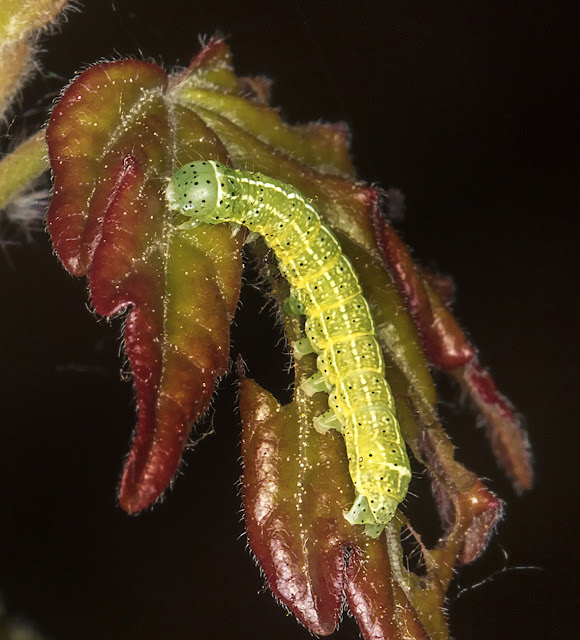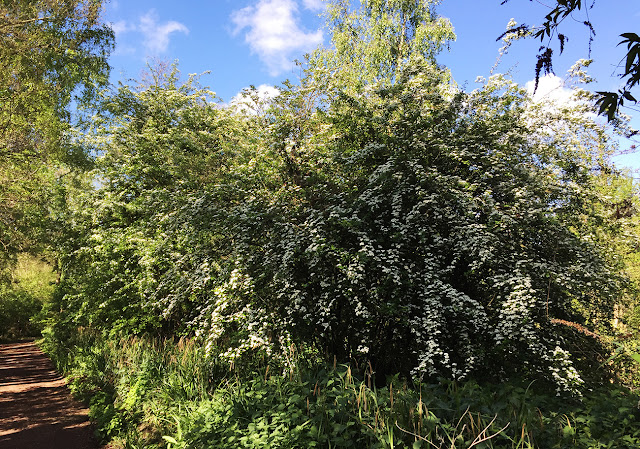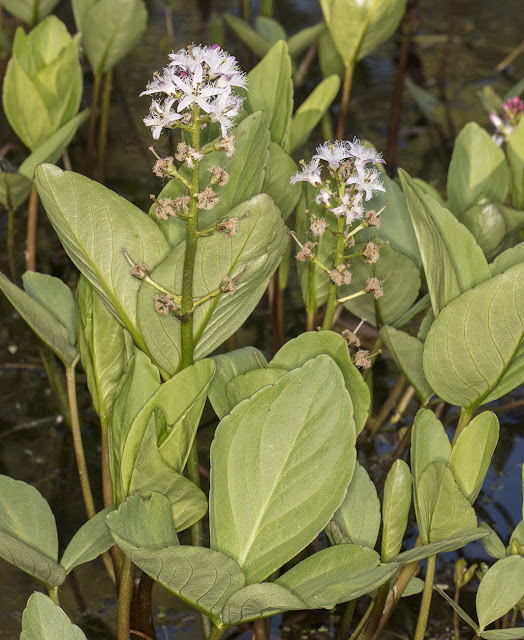 |
| Scots Pine, Pinus sylvestris. Jubilee Country Park, 30 April 2017. |
There was a lichen walk in Jubilee Country Park last weekend, led by Ishpi Blatchley, or local lichen expert. I took the opportunity to take some photos of a range of subjects .. this one shows the male "cones" of a Scots Pine, shedding pollen. There are lots of little pollen grains stuck to the sort of spider webbing which you can find almost everywhere in the countryside.
 |
| Oak Apple gall. Jubilee Country Park, 30 April 2017. |
There were several of these galls, looking large and apple-like, on an oak tree that was right behind Isphi as she gave her introductory talk. I was itching to take a shot but waited until later as that seemed more polite! These growths are caused by the aptly-named Oak Apple Gall Wasp, Biorhiza pallida. There are hundreds of plant galls caused by a range of insects that make plants grow homes for them. Oaks have more types of gall than most plants.
 |
| Larva of Orthosia cerasi, Common Quaker. Jubilee Country Park, 30 April 2017. |
This caterpillar was munching on a Field Maple at the edge of the car park. It was identified for me later (caterpillars are hard!) as a Common Quaker, a type of moth that is easy to find early in the year. I was pleased to get a shot that showed the head and the whole body structure so clearly. It's not as easy as you might think, because they keep on the move and their heads go from side to side.
 |
| Parmelina pastillifera. Parmeliaceae. Jubilee Country Park, 1 May 2017. |
Finally, an actual lichen! Ishpi was pleased to find this Parmelina pastillifera as she only has three other sightings in the London Borough of Bromley (though it's not rare in the UK as a whole). This was on an oak branch and Ishpi was drawn to it by its steely glint.
 |
| Parmelina pastillifera. Parmeliaceae. Jubilee Country Park, 1 May 2017. |
I wasn't happy with the photos I took on the day so I went back the next day to improve on them. I opened the iris and sped up the shutter. This gives less depth of field, but better sharpness and less motion blur. (As I take these one-handed, holding the subject in place with my other hand, motion blur can be a problem, especially on a long springy tree branch.)
Those little bumps are isidia, little outgrowths containing both the fungus and alga component of the lichen. It can reproduce if these growths break off and are scattered. Their shape on this specimen helps to identify it.













